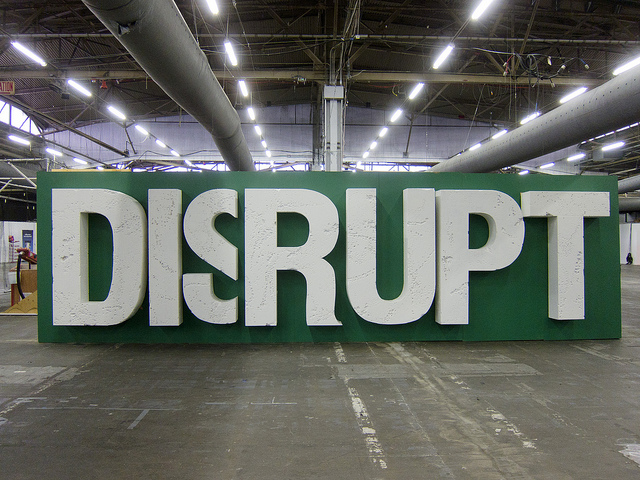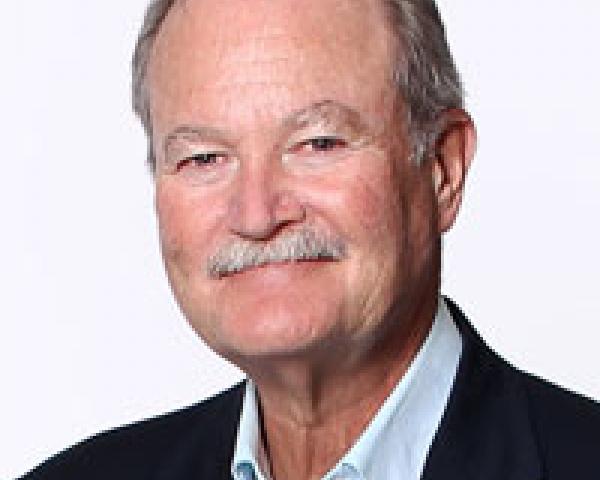Brian Duperreault, CEO of Hamilton Insurance Group, delivered these remarks to the recent Global Insurance Forum, held by the International Insurance Society (IIS) in New York City.
It’s a real pleasure to be with you at what is arguably one of the most important annual events in our industry.
I was just 18 years old when the International Insurance Society had its first global meeting in Austin, Texas. I entered the industry in my 20s and joined the IIS in my 30s.
Since then, I’ve benefitted professionally and personally from the knowledge I’ve gained and the friends I’ve made at these annual meetings.
Today, I’m going to talk about an issue that represents a distinct threat to our industry. I might even go so far as to call it an existential threat.
But, like all threats, it also represents a great opportunity.
In it could lie the seeds of a legacy of meaningful change for each of us charged with leading our industry.
So I’m going to address the question: Can we disrupt ourselves?
I’m going to start by saying a few words about Twitter.
Bear with me. I do have a point to make that’s relevant to insurance. Twitter has one billion registered users so far... about one human out of every seven on Earth.
Only 6% of Twitter users are over the age of 45. More than 300 million active users—most of them under 45—join Twitter each month.
Twitter started as a platform for sharing personal moments. It’s morphed into an information delivery system that plays a major role in distributing news, marketing products and affecting the outcome of political and social developments.
And this instant, real-time communication comes with the restriction that you can only use 140 characters to get your message across.
Twitter’s simple idea completely disrupted the way we communicate. I used Twitter as an example of disruption last week when I spoke at the Young Professionals Global Forum in London. I called that speech "Risk in 140 Characters."
Since then, the CEO of Twitter has stepped down amid charges that the platform isn’t evolving as quickly as it should, and there’s been a lot of soul searching about how this disruptive form of social media can keep current in this ever-changing, ever-evolving age of disruption.
In spite of Twitter’s challenges, I believe the metaphor is a good one. It’s time to select, analyze and price risk, faster and more efficiently – the equivalent of risk in 140 characters.
The young professionals I spoke to last week are all digital natives. As Don Tapscott, who studies the digital economy, says: They’ve been bathed in bits since they were born.
They embrace technology and use it to navigate their world, their relationships and their work swiftly and creatively.
These digital natives are mobile, wireless and connected with their peers all over the globe.
Meanwhile, in the other corner, I—and most of my friends here in this room—are digital immigrants. We’ve had to make a deliberate and conscious choice to adapt to digital ways of doing what we used to do on paper, over the telephone, or through other physical or, at best, analog, means.
Even though it was our generation who invented the Internet, many of us have the feeling of being strangers in a strange land. Using search engines and apps to navigate life and work doesn’t come naturally to us.
We digital immigrants tend to shun social media or dabble around the edges, still thinking Facebook, Twitter, SnapChat and Instagram are trendy chat rooms where younger people tell everybody what they’re up to a thousand times a day.
But the truth is that social media, which erupted onto the scene as a means of personal contact, has quickly morphed into a powerful engine of collaboration with profound ramifications for business development.
Digital natives know that. And because they know it, and use that knowledge to great effect, they are leaping ahead of the digital immigrants in our generation.
There’s a term for this: digital lapping. And this lapping of one generation by another is the basis for the disruption that’s blowing apart traditional business models. For digital natives, disruption is the new normal.
You know what I’m talking about. How many music stores saw iTunes coming? How many taxi dispatchers saw Uber coming? How many hotel chains saw Airbnb coming?
How many Blackberry execs even saw the iPhone coming? Well, maybe they saw the iPhone coming, but it’s an understatement to say their reaction was too little, too late.
Pick any industry, and you can see the pattern emerging.
The automotive industry is a telling example. Sergio Marchionne, CEO of Fiat Chrysler, recently said he’s “more determined than ever to pursue industry consolidation lest technology disrupters beat the auto industry at its own game.” Marchionne’s warning came after a meeting at Google and Tesla, and after spending almost an hour in a driverless car.
“The agenda needs to be moved,” he said, “or all these technology disrupters will come in and make our life incredibly uncomfortable.”
Clearly, all industries are facing massive disruptions because of technology. With new models of service delivery, new categories of products and restructured value chains, society and the customer expect far more than traditional businesses can offer.
These expectations represent a potentially bleak scenario for the insurance industry, because in many respects we are way behind the curve as far as technology is concerned.
And we are groping in the dark for an effective solution to attract digital natives to the industry.
Digital natives are the much-discussed, much-researched Millennials.
Born in the eighties and nineties, they’re the offspring of the Baby Boomers. They’re sometimes known as Echo Boomers or the App Generation.
Millennials are the most diverse generation we’ve ever had. In the US, 35% are non-white, and researchers who study generational differences say they are the most tolerant generation yet, believing everyone should be part of the community.
We’ve been studying Millennials for quite a while, so we know a lot about them:
- They want to be team players.
- They want their careers to have purpose.
- They want to build new things that matter.
- They use social media to collaborate. They crowd-source everything from fundraising to business capital.
- They fight for worthy causes by alerting each other to things that distress them.
- They don’t see much difference between work and leisure, and don’t see the point of rigid work schedules and being tied to an office.
- They see hierarchy as an obsolete impediment to team progress. They need to get things done, and waiting for permission doesn’t strike them as sensible.
Now, does that list describe how the typical insurance company operates? I don’t think so.That’s a red flag that we need to pay attention to. Consider this:
- Almost half of insurance professionals in the U.S. are over the age of 45.
- 25% of all the people working in our industry will be eligible to retire in just three years.
- That means that, in just five years, there will be 400,000 open positions in the U.S. alone.
Five years ago, Accenture warned that it’s hard to attract Millennials to a career in insurance. Accenture noted that “the industry’s apprentice structure—with its long learning curve and slow promotions—in no way suits a Millennial’s expectation of getting rapid feedback, or working in a flat organization that offers dynamic career development.” Since then, more alarm bells have been rung.
Recently, a report found that only 5% of high school and college graduates thought a career in insurance was worth looking at. When asked why, they said they thought the industry was dull and conservative and doesn’t offer much of a chance to make a difference.
For someone whose whole career has been dedicated to an industry that promises to protect, that really hurts. At the very least, we’ve done a terrible job in helping people to understand the value in what we do.
With hundreds of thousands approaching retirement in an industry that’s dismissed as boring and static, and with disruption looming on the horizon, I believe we’re staring into the jaws of a crisis.
Millennials are not only our future workforce, they’re our future customer base. And our industry, quite simply, is not prepared to attract the numbers we need, with the skills we need, to take charge of the disruption we know is coming.
The men and women in this room have presided over some of the great developments in our industry: Catastrophe modeling, deregulation and globalization all happened on our watch.
We’re not strangers to bold moves. Innovation isn’t a foreign concept.
But collectively we don’t seem to know how to crack this nut: How do we attract hyper-connected, entrepreneurial digital natives into the generally old-school world that so desperately needs them?
I know there are pockets of energy devoted to finding a solution to this problem.
MyPath has been established by the Institutes and affiliates as an industry-led effort to raise awareness of insurance as a career, and to provide information about the industry as well as job opportunities. Hamilton USA, the US operations of Hamilton Insurance Group, is one of the industry partners participating in MyPath.
And there’s Tomorrow’s Talent Challenge, an awareness campaign established by Valen, which provides predictive analytic and modeling capabilities to the industry.
Valen is so concerned about the lack of interest the digital generation is showing in insurance that it created Tomorrow’s Talent Challenge “as a rallying cry for the insurance industry to band together to sell exciting, innovative careers in insurance to Millennials.”
These are laudable efforts – driven by the same sense of urgency that I’m outlining here.
But they’re not enough.
We need a focused, coordinated strategy embraced by some of the major players in our industry.
We need a collaborative commitment like the one announced a few months ago.
In January, as many of you know, a consortium of eight companies from our sector announced a far-reaching initiative to provide insurance to the underserved. My company is proud to be one of the partner companies.
We referred to the new entity as the Microinsurance Venture Incubator - or MVI. Quite a mouthful.
This morning, we announced that the venture has a much better name.
After inviting more than 100,000 employees in our partner companies to help us name the MVI, we chose Blue Marble Microinsurance. This is a great name. It really captures the spirit of our venture. It reminds us of how connected we all are – ever more so in this digital age.
Blue Marble Microinsurance takes a holistic view of our world, planning to extend protection to a broader portion of the population by providing insurance in a socially responsible and sustainable way.
It offers people on the wrong side of the digital divide the stability and potential for growth that insurance makes possible.
Blue Marble Microinsurance’s company partners know that the ability to manage and finance risk is critical to the development of society – any society, but most urgently to those struggling to gain a stable toehold in their pursuit of education, jobs and a prosperous future.
Research and development enabled by Blue Marble Microinsurance will bring affordable insurance products to the developing world.
Technology is at the base of this global project, using innovative apps to connect consumers and products on a micro level – but what drives it is our industry’s collaboration, our sense of purpose and our focus on the future.
What we learn from Blue Marble Microinsurance could truly shift the insurance paradigm.
Yes, it has the potential to reduce the cost of risk analysis and product distribution and delivery. And, through reverse innovation, the application of that knowledge in the developed world could be one of the most enduring legacies of this project.
I have to admit to a huge sense of satisfaction at watching this concept unfold. It was three years ago – almost to the day - that I addressed the annual IIS meeting in Rio and outlined a plan for a coordinated industry effort focused on microinsurance.
At the time, I said that this wasn’t the sort of project that could be tackled by one company. Many had tried, but none had succeeded.
I’m delighted that Joan Lamm-Tennant is now leading the development of Blue Marble Microinsurance.
Joan poured her heart and soul into taking an idea outlined in Rio in 2012 and making it a reality three years later.
This initiative is a shining, innovative example of what happens when we work together to find creative risk solutions.
So if we can find a way to offer coverage to literally billions in developing markets around the world, I know we can figure out how to redefine our work environments, our human resources policies and our recruiting programs in such a way that digital natives will be beating down the doors to join us.
Last week, I challenged the leaders of tomorrow to take charge of their destiny and find ways to attract Millennials into the insurance industry.
Today, I’m inviting you, as today’s leaders, to work together to develop a strategy for our disruption, leveraging the talent and skills of the digital generation.
As I said last week, insurance should be catnip to a Millennial looking for a purpose-driven career.
Let’s invite these digital natives in, make them feel welcome and give them the benefit of our considerable experience and expertise.
Then, let’s step aside and let them lead the way.
We have one of those rare opportunities to leave a lasting, collective legacy – one that ensures the insurance industry stays relevant and innovative and becomes the No. 1 career choice for any young person who wants to make a difference, be part of a team, keep the world working – for generations and generations to come.
Blue Marble Microinsurance is proof that, when we collaborate, exciting things happen. Let’s take a disruptive step to the future – together.








